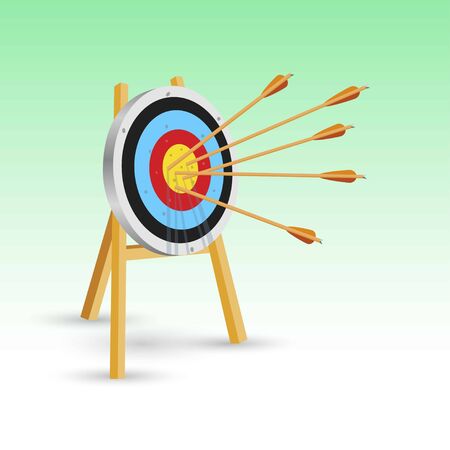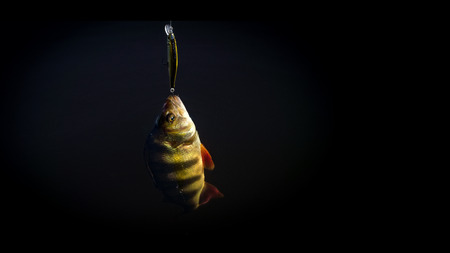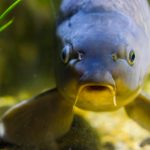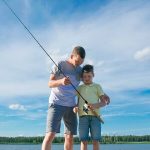Understanding Fall Trout Behavior
When autumn rolls in, the world of trout fishing starts to change. Cooler temps, shorter days, and nature’s instinctual clock all begin to shift how big trout behave—and if you want a shot at landing a true trophy, understanding these changes is key.
How Dropping Water Temperatures Affect Trout
As summer fades and water temperatures begin to drop, trout—especially larger ones—become more active. Cooler water holds more oxygen, which means trout can move around more comfortably and feed with more energy. In many lakes and rivers across the U.S., this is when big brown and rainbow trout start cruising shallower waters, making them easier to target.
Temperature Ranges and Trout Activity
| Water Temperature (°F) | Trout Activity Level | Best Strategy |
|---|---|---|
| 70+°F | Low (Stressed) | Avoid fishing; fish are lethargic |
| 60–68°F | Moderate | Fish deeper pools or early/late hours |
| 50–59°F | High (Ideal Range) | Target feeding zones aggressively |
| Below 50°F | Slowing down | Use slower retrieves and deeper presentations |
The Role of Changing Daylight Hours
As daylight shortens in the fall, trout respond by adjusting their feeding times. You’ll often find them feeding more aggressively during low-light periods like dawn and dusk. These golden hours become prime time for hooking into a heavy fish. Also, fewer daylight hours signal seasonal transitions that trigger behavioral shifts in mature trout.
Spawning Instincts Kick In
Fall is spawning season for brown trout and brook trout. As they prepare to spawn, these fish get more territorial and aggressive—especially the bigger males. This aggression makes them more likely to strike large streamers or flashy baits not just out of hunger but out of instinct to protect their space.
Trophy Trout Spawning Behavior Highlights
- Browns: Spawn from late September through November depending on region.
- Aggression: Increased aggression toward intruders—perfect for streamer fishing.
- Location: Look for gravel beds in rivers or lake inlets where they stage before spawning.
If youre planning to chase trophy trout this fall, paying attention to how they react to cooler water, less daylight, and their natural urge to spawn can give you a serious edge. These changes not only affect where the fish are but also how they feed—and knowing that is half the battle.
2. Gear and Tackle for Trophy Trout
When youre targeting trophy trout in the fall, having the right gear can make all the difference between landing a monster and watching it slip away. Fall brings cooler water temps, more aggressive fish, and changing conditions, so your tackle needs to be dialed in for performance and reliability. Heres what you need to know about rods, reels, lines, and leader setups that work best when chasing those big fall trout.
Rods: Sensitivity Meets Strength
For fall trophy trout, medium-light to medium power spinning or fly rods with fast action are ideal. You want enough backbone to control a large fish but still need the sensitivity to detect subtle strikes, especially in cold water.
| Rod Type | Length | Power/Action | Best Use |
|---|---|---|---|
| Spinning Rod | 66″ – 7 | Medium-Light / Fast Action | Precision casting with lures or bait |
| Fly Rod | 9 | 5-7 wt / Fast Action | Nymphing or streamer fishing |
Reels: Smooth Drag is Key
A quality reel with a smooth drag system is essential when fighting big trout. Look for reels with sealed drag systems if youre fishing in wet or freezing conditions. For spinning reels, something in the 2500–3000 size range works well. For fly anglers, match your reel size to your rod weight and ensure it balances properly.
Recommended Features:
- Smooth, adjustable drag system
- Corrosion-resistant materials
- Sufficient line capacity (especially for longer runs)
Lines: Go Low-Vis and Match Conditions
Your line choice depends on your presentation method. In clear fall waters, low-visibility fluorocarbon leaders or tippets can increase your chances of hooking wary trout. Braided mainline with a fluoro leader works great for spinning setups, while fly lines should match the type of fishing—floating for nymphs and dries, sink-tip for streamers.
| Setup Type | Main Line | Leader/Tippet |
|---|---|---|
| Spinning | Braided (10–15 lb) | Fluorocarbon (6–10 lb) |
| Fly Fishing – Nymphs/Dries | Floating Fly Line (WF5–7F) | Tapered Leader + Fluoro Tippet (4X–6X) |
| Fly Fishing – Streamers | Sink-Tip Fly Line (WF6–8S) | Straight Fluoro Leader (1X–3X) |
Tackle Upgrades That Make a Difference
If youre serious about landing trophy-sized trout this fall, consider these gear upgrades:
- Knotless tapered leaders: Less drag in the water and better turnover for flies.
- Tungsten putty or weighted flies: Get down faster in deeper pools where big trout often hold.
- Sensitive rod tips or strike indicators: Help detect light bites during colder months.
- Pliers and net upgrades: Rubber mesh nets protect fish better; good pliers make hook removal easier.
Trophy Trout Gear Checklist:
- Medium-light/medium power rod
- Smooth-drag reel (spinning or fly)
- Braided mainline with fluoro leader (spin)
- Matched fly line/leader setup (fly)
- Knotless tapered leaders & tippets
- Tungsten weights or weighted flies
- Sensitive indicators or light-tipped rods
- Lip-grip pliers & rubber net
The right gear doesnt just help you land more fish—it helps you land the right ones. With these setups dialed in for fall conditions, youll be ready when that trophy trout finally takes the bait.

3. Top Lures and Baits for Fall Success
As water temperatures drop and trout metabolism slows, choosing the right lures and baits becomes even more important. Trophy trout in the fall are selective but opportunistic, often feeding heavily before winter sets in. Heres a breakdown of proven options to help you hook that fish of a lifetime.
Best Lure Types for Fall Trophy Trout
Fall trout respond well to realistic presentations that mimic their natural prey. Below are some top-performing lure types to consider:
| Lure Type | Recommended Colors | Size Range | Presentation Tips |
|---|---|---|---|
| Spoons | Gold, Copper, Brown/Orange | 1/4 oz – 1/2 oz | Use a slow, steady retrieve with occasional twitches to mimic injured baitfish. |
| Jerkbaits | Naturals like Rainbow Trout, Perch, or Silver/Black | 3″–5″ | Pause frequently during retrieve; strikes often happen on the pause. |
| Spinners | Brown, Orange, Chartreuse | #2–#4 blades | Retrieve slowly near structure or along current seams where trout ambush prey. |
Top Flies for Fall Fly Fishing
If youre fly fishing, fall is an excellent time to match larger food sources like baitfish and leeches. Here are some effective patterns:
- Woolly Buggers: Olive, black, or brown in sizes 6–10; dead drift or strip them near drop-offs and deep pools.
- Zonkers: White or silver for mimicking minnows; great when stripped quickly then paused.
- Egg Patterns: Orange or peach tones can be deadly near spawning areas.
Bait Options That Work in Cold Water
Bait fishing can also be productive in the fall when trout are less aggressive but still feeding. Below are a few go-to choices:
| Bait Type | Description | How to Rig It |
|---|---|---|
| Nightly Crawlers | A classic choice—natural scent draws big trout from distance. | Thread onto a size 6–8 hook with a split shot about 12″ up the line. |
| Salmon Eggs | Mimics natural forage during spawning season. | Use single eggs on small treble hooks or egg clusters on a drift rig. |
| Berkley PowerBait® | Scented dough bait designed for cold-water effectiveness. | Mold around treble hook and float off bottom using a sliding sinker rig. |
Pro Tip:
Trophy trout in the fall tend to feed during low-light hours—early morning and late afternoon. Match your lure size and color to the clarity of the water: go bright in stained water and natural in clear conditions.
Quick Guide: Matching Lure Color to Water Conditions
| Water Clarity | Lure Color Recommendation |
|---|---|
| Clear Water | Naturals like silver, white, or light brown |
| Slightly Stained Water | Copper, gold, orange hues |
| Muddy Water | Chartreuse, fluorescent orange, black for contrast |
The key to success is experimenting with lure types and retrieves until you find what triggers strikes. In fall conditions, subtle changes can make a big difference when targeting trophy-class trout.
4. Best Locations to Find Fall Trophies
When fall rolls around, trophy trout start to change their behavior. Cooler water temperatures and spawning instincts make them more active and easier to target—if you know where to look. Here are some of the best types of habitats to find those big fall trout, whether youre fishing rivers or lakes.
Key Fall Trout Habitats
During autumn, trout move into specific areas that offer food, cover, and the right conditions for spawning. Understanding these environments can help you zero in on the most productive spots.
Common Fall Trout Holding Areas
| Habitat Type | Description | Why It’s Productive |
|---|---|---|
| Deep Pools | Slow-moving sections with depth and cover like logs or boulders | Provide safety and stable water temps; big trout rest here between feeding runs |
| Gravel Beds | Shallow areas with clean gravel and current flow | Prime spawning sites; big browns often guard these zones |
| Transitional Zones | Areas where fast water meets slow pools or riffles turn into runs | Natural feeding lanes; trout wait here for drifting food |
| Inlets & Outlets (Lakes) | Where streams enter or exit a lake | Create oxygen-rich currents that attract baitfish—and hungry trout follow |
| Drop-offs & Ledges (Lakes) | Shelves that suddenly deepen near shorelines or underwater structure | Trophy trout cruise these edges while hunting during low light hours |
How to Pinpoint These Spots on the Water
On Rivers:
- Look for structure: Fallen trees, undercut banks, and large rocks often hold fish.
- Use polarized sunglasses: Helps you spot depth changes and holding fish in clear water.
- Watch for surface activity: Rising fish near gravel beds can indicate spawning movement.
- Scout before you fish: Walk the banks early morning or evening to spot cruising trout.
On Lakes:
- Paddle or motor slowly along shorelines: Look for visible drop-offs or weed lines.
- Use electronics: A good fish finder can reveal submerged structure and temperature breaks.
- Fish early and late: Trophy trout tend to move shallow during low-light periods in fall.
- Target wind-blown shores: Wind pushes food toward certain banks—big trout follow the buffet.
The key to consistent success is understanding how fall changes both water conditions and trout behavior. By focusing on these high-percentage locations, youll greatly improve your chances of hooking into a true trophy this season.
5. Techniques and Tactics That Work
Fall is a prime time for targeting trophy trout, but success often comes down to how well you adapt your tactics throughout the day. Both fly anglers and spin fishers can find success by adjusting their approach based on light conditions, water temperature, and trout behavior.
Fly Fishing Techniques
When fly fishing in the fall, matching the hatch is still important, but big trout are often more aggressive and willing to chase larger patterns. Streamers become especially effective as trout bulk up before winter. Nymphing remains productive during slower periods.
Top Fall Fly Patterns
| Pattern | Type | Best Time to Use |
|---|---|---|
| Woolly Bugger | Streamer | Early morning or cloudy afternoons |
| Pheasant Tail Nymph | Nymph | Midday in clear water |
| Egg Pattern | Nymph/Egg Imitation | Near spawning areas |
| Zonker | Streamer | Dusk or low-light conditions |
Spin Fishing Techniques
For spin anglers, fall is all about covering water and triggering reaction strikes. This is the time to throw larger lures that mimic baitfish or other prey. Slow presentations work best early and late in the day, while faster retrieves can be effective under bright skies or when fish are active.
Effective Lure Choices for Trophy Trout
| Lure Type | Recommended Lures | When to Use |
|---|---|---|
| Spoons | Kastmaster, Little Cleo | Deep pools during cold mornings |
| Crankbaits | Rapala Original Floater, Countdown Minnow | Dawn and dusk near drop-offs |
| Soft Plastics | Paddle tail swimbaits, tube jigs | Slow retrieve in shallows mid-morning |
When to Change Your Tactics
Trophy trout don’t feed all day long—they have windows of activity that change with weather, light, and pressure. Heres a quick guide on when to switch things up:
| Time of Day/Condition | Tactic Adjustment Tip |
|---|---|
| Cold Early Morning (Sunrise) | Start with slow presentations like nymphs or soft plastics; focus on deep pools. |
| Late Morning (Warming Up) | If no bites, switch to faster-moving lures or streamers; cover more water. |
| Noon (Bright Sunlight) | Downsize flies/lures or go deeper; fish may be less aggressive. |
| Dusk (Golden Hour) | This is prime time—try big streamers or crankbaits near structure and current breaks. |
The key is being flexible. If something isn’t working after 30–45 minutes, try a different depth, lure size, color, or retrieve speed. Trophy trout didn’t get big by being easy targets—you’ll need to stay sharp and adjust throughout your day on the water.


